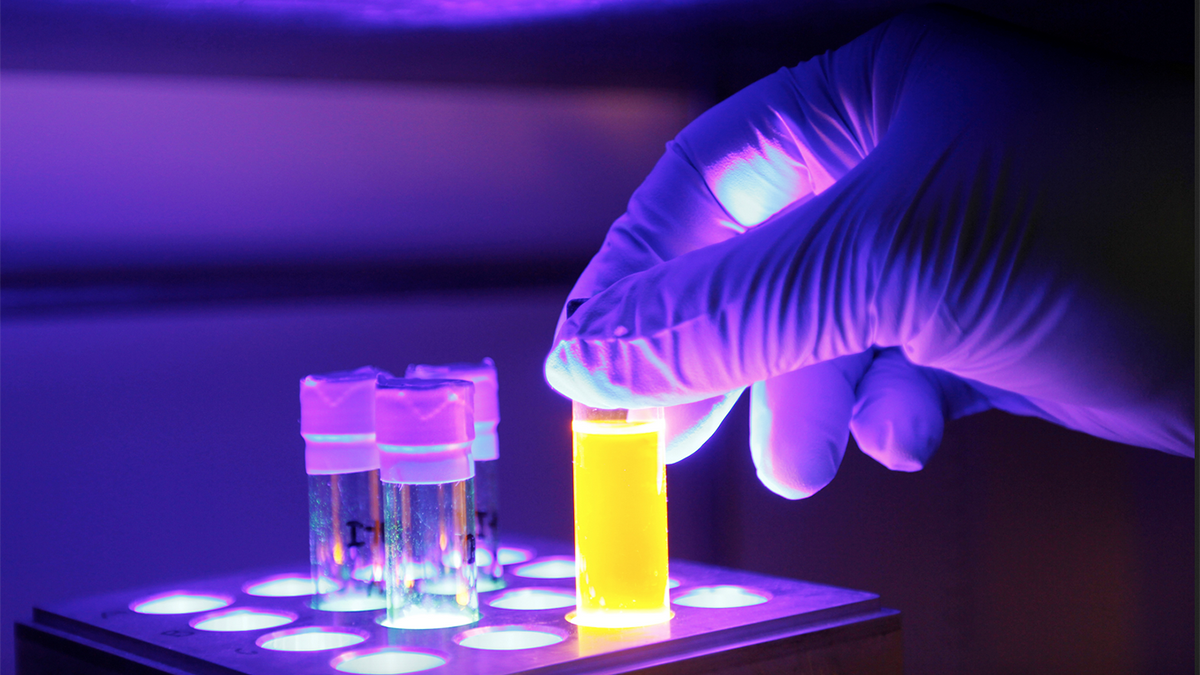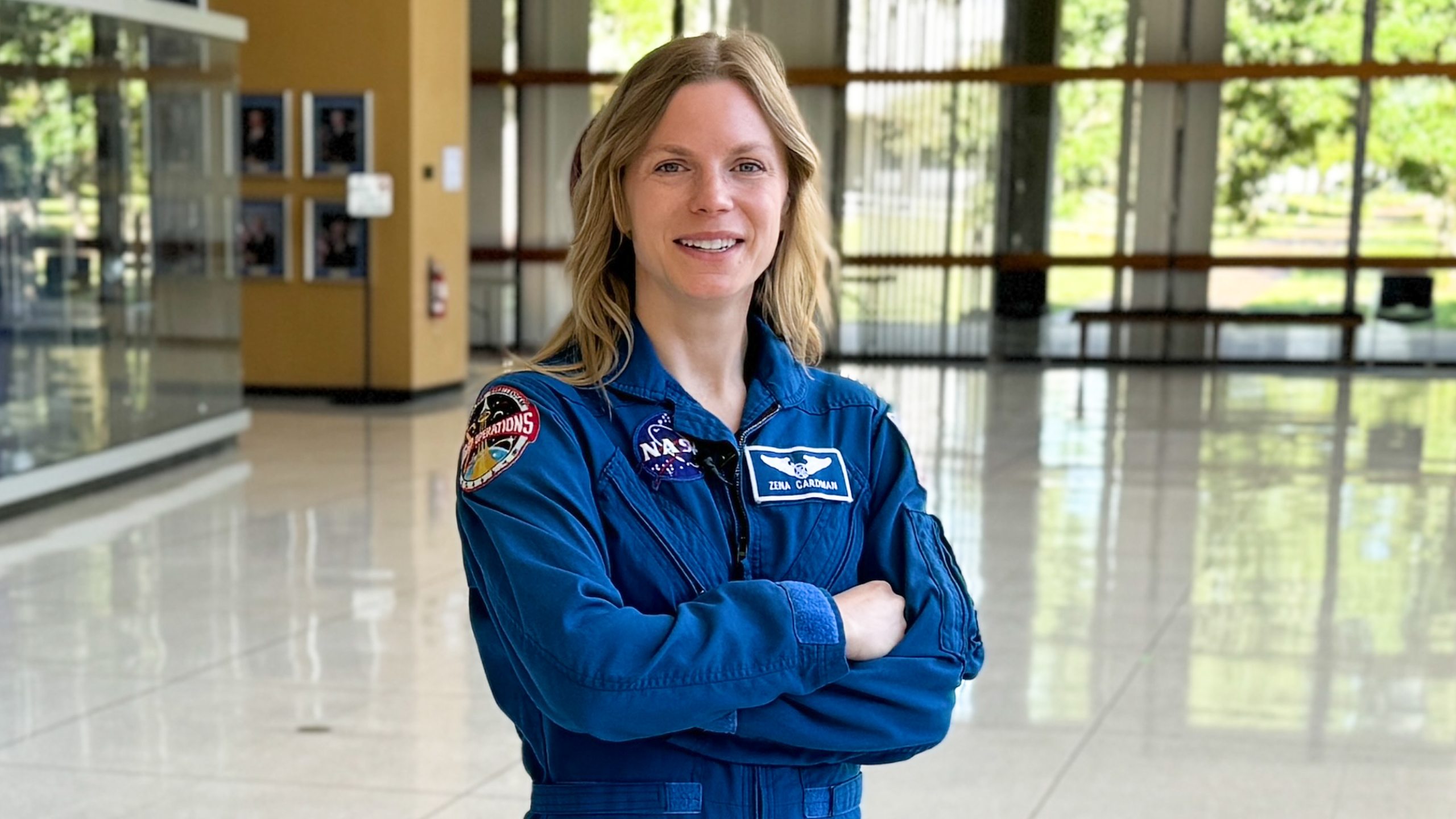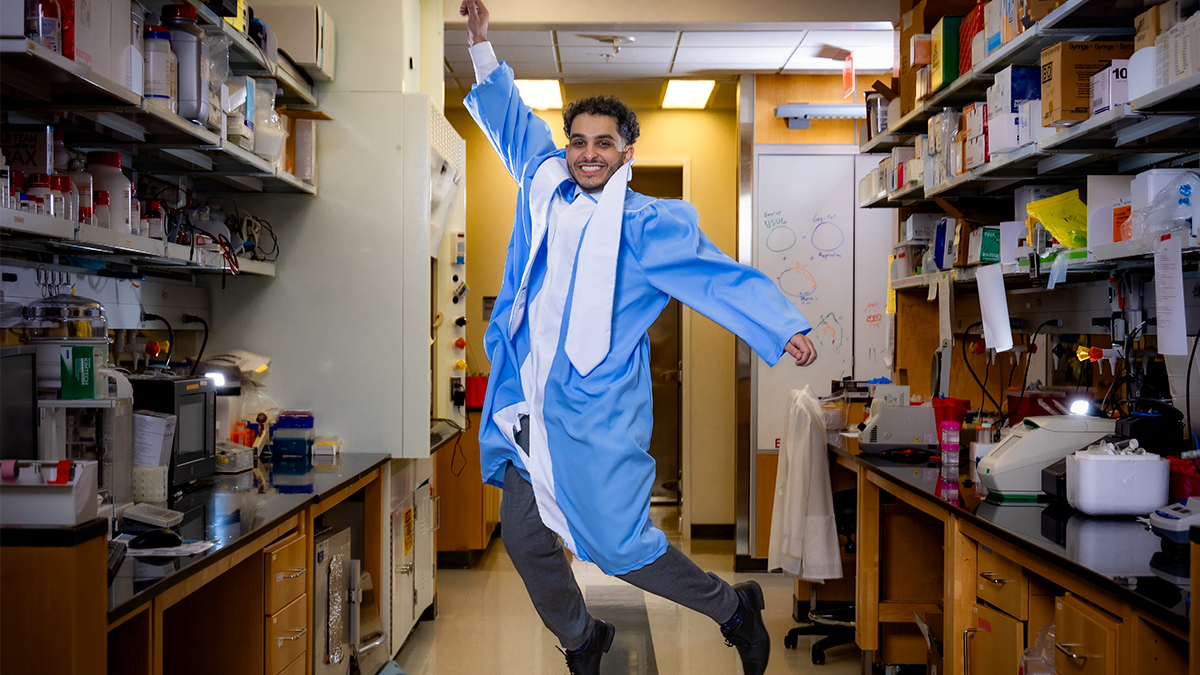Generating power like plants
When plants absorb sunlight, they convert carbon dioxide into energy-rich organic compounds. What if humans could do the same thing? What if we could pull CO2 out of the air and use it to build organic molecules? This revolutionary idea is still just that — an idea. But organic chemists at Carolina are laying the groundwork for turning it into reality.

A freshwater aquarium looks a bit like an underwater garden — bright, green grasses grow next to burgundy leaves resembling arugula. Small, silver fish dart between the foliage, as streams of bubbles flow up through the water column.
Dave Nicewicz stares at this array of life contained within the rectangular glass tank on his desk.
“Look at the little oxygen bubble at the edge of the leaf — that’s a good one” he says, pointing to the plant with a reddish hue. A small heat lamp mimics the sun, radiating light into the tank, while six different species of plants release oxygen.
“I love this thing because you can actually see photosynthesis happening — you can’t see that outside.”
As a research scientist, Nicewicz finds inspiration in photosynthesis. And while he loves plants (both his office and home are full of them) he is not a biologist — he’s an organic chemist.
“I’m not equating what we do to photosynthesis, but we’re inspired by that process,” he says.
Nicewicz’s ultimate goal is to use the most abundant source of energy on the planet — sunlight — to power chemical reactions. “To harvest sunlight in a way that either directly or indirectly can be used in chemical reactions by translating photons into electrons,” he says. “That’s the future.”
Humans have not yet engineered a way to create the complex biological machinery of plant life in a lab, according to Nicewicz, but the inspiration for the starting point is there — in the form of photo-redox catalysis.
“It’s just a fancy way of saying we use light to make cool molecules,” says Nate Romero, a former PhD student of the Nicewicz lab.
To explain this chemical process, it’s helpful to break down each word. We’re talking about creating reactions, and all reactions require an energy input – like heat or light. Photo refers to light, and redox refers to the transfer of electrons. Catalysis simply means using a catalyst, which decreases the amount of energy needed for a reaction to occur.
“We can use a single catalyst to make hundreds or thousands or millions of molecules that we’re interested in studying,” says Cole Cruz, a graduate research assistant in the lab.
By trying out different catalysts, this group of organic chemists can trim off one part of a molecule, or combine molecules that wouldn’t typically combine. These “cool molecules” play a major role in the development of vital plastics and medicines around the world — making the production process more economical and more environmentally friendly.
To do that, Nicewicz and his students want to avoid the use of toxic metals, and utilize processes that generate little or not waste at all — the same way plants generate energy. “That’s the challenge for chemical synthesis in the 21st century,” he says. “We have to mimic how plants make molecules.”




